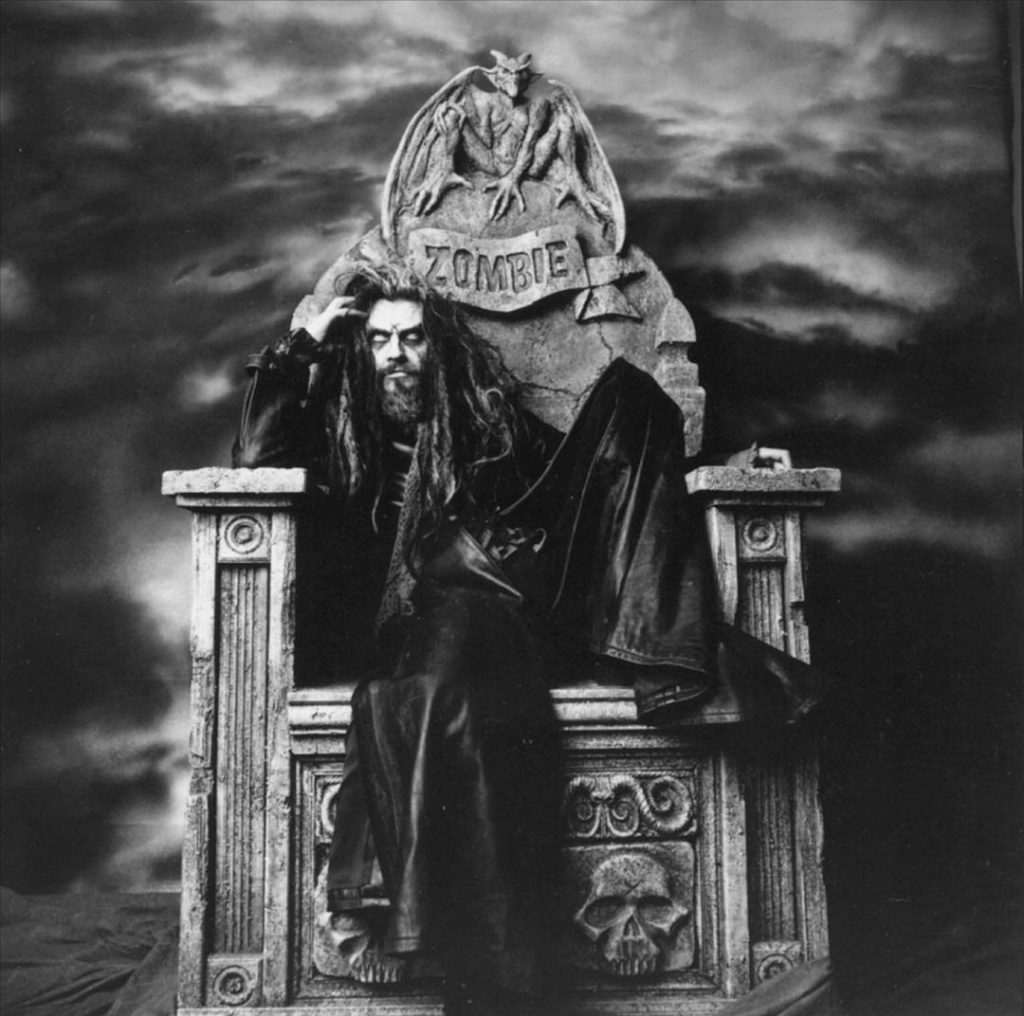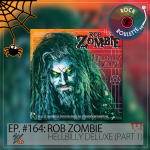
Episode 164 is here — our Halloween special! The wheel has spoken, and it landed on a perfect pick for the season: Rob Zombie’s debut album! Join us as we dive into the spooky riffs, creepy vibes, and twisted fun of this record. It doesn’t get more Halloween than this one!
Hellbilly Deluxe: 13 Tales of Cadaverous Cavorting Inside the Spookshow International is the debut solo studio album by American musician and filmmaker Rob Zombie. The album serves as his first release outside of the band White Zombie, with whom he released four albums (two of which went multi-platinum). Hellbilly Deluxe was released on August 25, 1998, through Geffen Records. It is a concept album that portrays Zombie’s love for classic horror films with heavy metal and electronic music. The album’s lyrics speak of murder, chaos, and supernatural forces. The majority of Hellbilly Deluxe was recorded in California, and was produced by both Zombie and Scott Humphrey; Zombie is credited as the sole writer on all of the songs.
Hellbilly Deluxe was released to a generally positive critical reception, with the album’s production being praised. The album proved to be a commercial success, reaching the top five of the Billboard 200 and selling over three million copies in the United States. Hellbilly Deluxe outsold all of Zombie’s releases with his former band, and established him as a successful solo artist. The project appeared on multiple charts worldwide, though failed to duplicate the success it had in North America. Since its release, the album has garnered the title of a “shock rock classic” by numerous publications.
The album was preceded by the release of Zombie’s debut single, “Dragula”. The song was a hit in the United States, and appeared on the singles chart in the United Kingdom. “Living Dead Girl” was released as the album’s second single, and achieved a similar amount of success as its predecessor. The album’s third and final single was “Superbeast”, which failed to emulate the commercial performance of the album’s first two singles. All three of the songs were used extensively in the media, appearing in various films and video games. “Dragula” is often referred to as Zombie’s signature song, and remains his highest selling single worldwide. Hellbilly Deluxe is Zombie’s most successful album to date.
Rob Zombie Band
Rob Zombie – vocals, lyrics, producer, music, production, all other art, additional photos, art direction
Riggs – guitars
Blasko – bass
Tempesta – drums
Additional Musicians
Danny Lohner – additional guitars & bass
Mark Matcho – additional guitars & bass
Tommy Lee – drums on “Meet the Creeper” and “The Ballad of Resurrection Joe and Rosa Whore”
Production
Scott Humphrey – music, producer, mixing, engineering, programming
Chris Lord-Alge – additional mixing
Frank Gryner – additional engineering
Paul DeCarli – additional programming
Tom Baker – mastering
Art/Video/Legal
Basil Gogos – cover art
Dan “The Man” Brereton – 1313 painting
Gene “The Mean Machine” Colan – comic pages
Kitty Moon – living dead girl
Norman Cabrera – monster manipulations
Myriam Santos-Kayda – photography
Chapman Baehler – additional photos
Nika/Lucky Ninja House of Graphics – art direction
Andy Gould/Jodie Wilson – management
John Dittmar – booking
Jeffrey Light – legal affairs
Scott Adair – business affairs
Ray Farrell – A&R
Intro Music/Wheel Spin Music by LiteSaturation from Pixabay

Fair Use
* Copyright Disclaimer Under Section 107 of the Copyright Act 1976, allowance is made for "fair use" for purposes such as criticism, comment, news reporting, teaching, scholarship, and research. Fair use is a use permitted by copyright statute that might otherwise be infringing. Non-profit, educational, or personal use tips the balance in favor of fair use. No copyright infringement intended. ALL RIGHTS BELONG TO THEIR RESPECTIVE OWNERS
This is our musical reaction, breakdown, and commentary analysis of the song. We intend no copyright infringement, and this is not a replacement for listening to the artist's music. The content made available through this site is for educational and informational purposes only.
The site may contain copyrighted material owned by a third party, the use of which has not always been specifically authorized by the copyright owner. Notwithstanding a copyright owner’s rights under the Copyright Act, Section 107 of the Copyright Act allows limited use of copyrighted material without requiring permission from the rights holders, for purposes such as education, criticism, comment, news reporting, teaching, scholarship, and research. These so-called “fair uses” are permitted even if the use of the work would otherwise be infringing. *





